Let there be known that the world is blessed with different natural magnificent caves, but let me tell that we are more abundant with caves that are hidden and majestic in their own way that comes along with some of their folklore stories. Be prepared to be enchanted as I pull together just 10 of the coolest looking caves you’ve ever seen in the world.
10) Hoyo Negro cave
While Hoyo Negro is being marvelous on its own, it is the most important Paleoindian site discovered in the last decade. The complete, well-preserved skeleton of a young girl from the Late Pleistocene period, between over 12,000 years ago was discovered resting at the floor of a large chamber inside an underwater cave in Mexico’s Yucatan Peninsula. The remains were scattered on the floor and walls of the chamber. Some divers came to a conclusion that it was a skeleton of a girl. A Paleoamerican girl nicknamed Naia, who had fallen to her death while probably collecting water from the cave. The divers found her skeleton, as well as the remains of several Ice age animals on the cave floor such as giant ground sloths, gomphotheres (extinct elephant-like animals related to mastodons), saber-toothed cats, and many other animals found their resting place inside the cave when the tunnels and the pit were mostly dry.
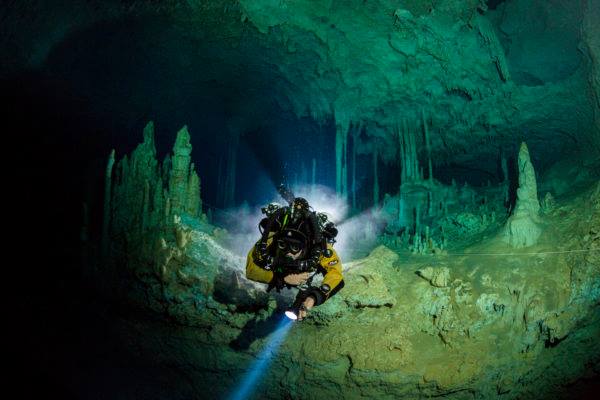
9) Marble Caves, Chile
The Marble Caves or “Cuevas de Mármol” is a geological formation of unusual beauty. Carved into the Patagonian Andes. The Marble Cave has three different structures: the Cave, the Chapel and an intricate system of water-filled caverns – the Marble Cathedral. These caves have formed in a pure marble and located in the deep blue water of General Carrera Lake – the second largest freshwater lake in South America and a remote glacial lake that spans the Chile-Argentina border such the caves are accessible only by boat.
Formed by over 6,000 years of waves washing up against calcium carbonate, the smooth, swirling blues of the cavern walls are a reflection of the lake’s azure waters, which change in intensity and hue, depending on water levels and time of year.
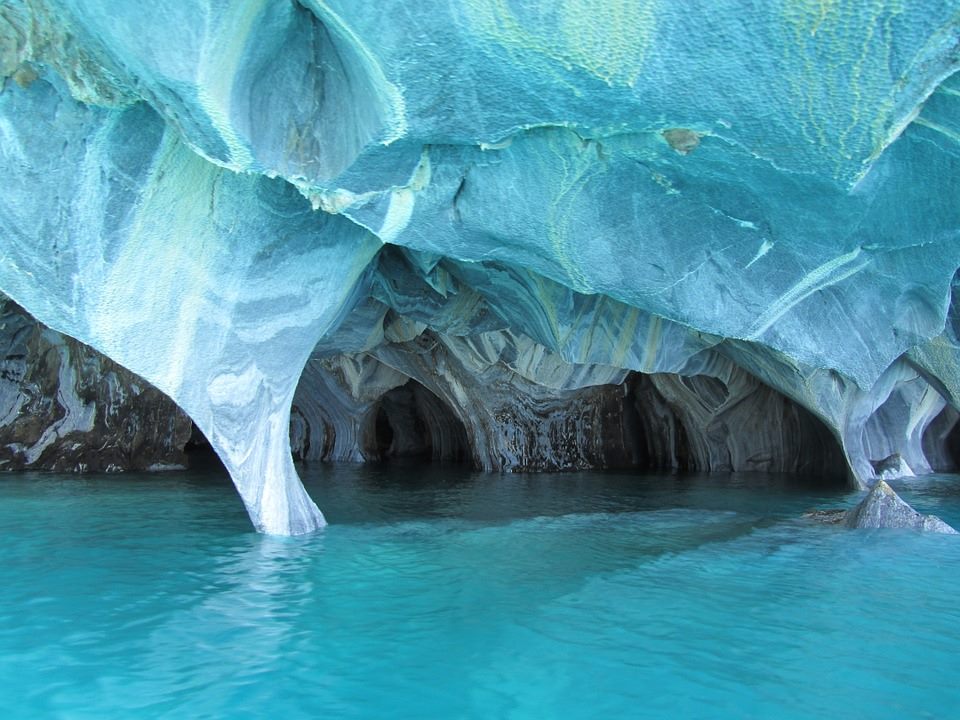
8) Mermaid’s Cave, Dunluce Castle
Fancying to explore some castles on your cave exploring trip? Then it’s a must to add the Mermaid’s Cave in the bucket list. To get into this cave, take a ramp located near sea level of Dunluce Castle, near the white rocks cliff. Take the steps down to the Dunluce Castle’s and see the hidden surprise, the Mermaid’s Cave. This spectacular sea cove beneath the castle rock is almost entirely hidden, except for a small, keyhole-shaped entrance. Once you pass through the entrance, the limestone chamber broadens, leading to a vast opening with echoing sound of crashing waves giving the enigmatic and magical feels. It is one of the most majestic castles in Ireland and itself is a worthy tourist destination.
Trivia: Folk band The Irish Rovers filmed their song The Legend of Dunluce Castle – at Dunluce Castle
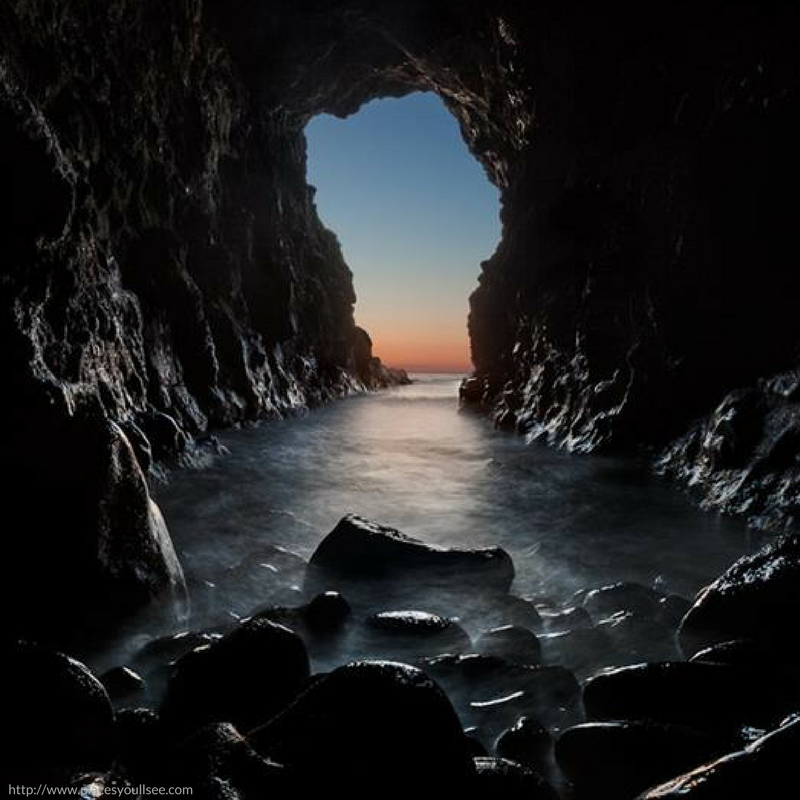
7) Avshalom Cave
One of the exceptional sites near to Jerusalem is the Stalactite cave, also known as the “Avshalom Cave or Soreq cave.” The cave has one of the most impressive collection of stalactites and stalagmites formed by water flowing from the ceiling to the floor of the cave, melting limestone on the way, creating a variety of remarkable patterns. A stunning experience with some world class geological wonders dating back 300,000 years, located on the western slopes of the Judean mountains near Bet Shemesh in Israel. The bizarre patterns at Avshalom Cave combined with the ghostly lightning creates a rather creepy ambience inside the cave.
The Avshalom Cave was discovered by accident in May 1968 when an explosion opened a crack to reveal the magical and fantastic cave hidden beneath. According to geologists, the Soreq cave was formed around 25 million years ago, when the mountainous range of the Judean Hills rose up above the surface of the water. The layers of limestone and dolomite rock were displaced and folded with time, forming cracks which allowed water to enter and dissolve some of the rock. While seeping through the cracks and flowing through the soil this water absorbed increasing amounts of carbon dioxide from the roots of the plants and the surrounding decay.
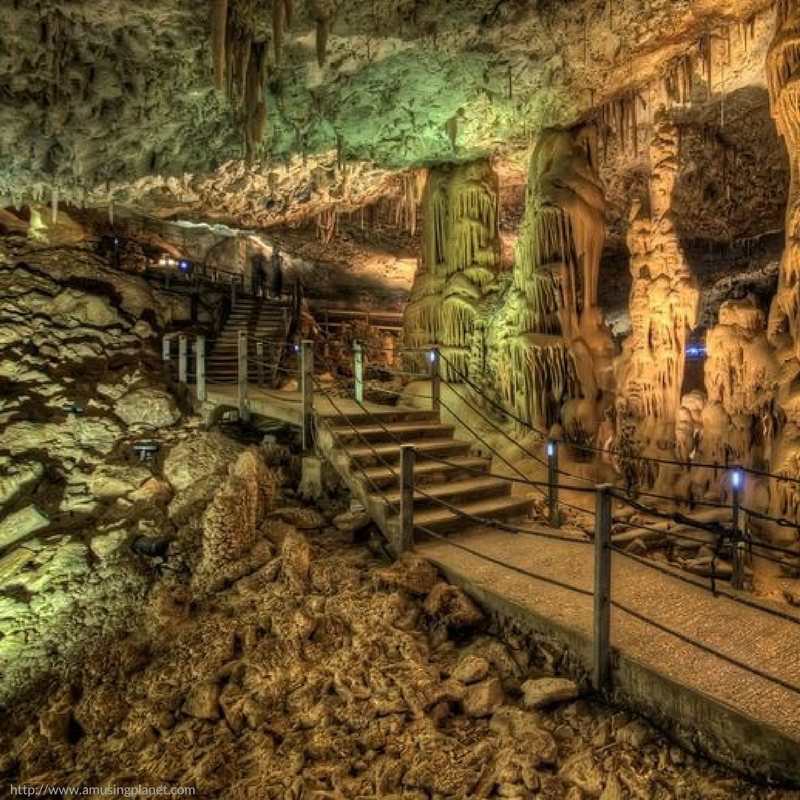
6) Reed Flute Cave
Reed Flute Cave (芦笛岩, Ludi Yan /loo-dee yen/) is a fascinating scene of natural sculptures, now enhanced with glistening multicolored lighting. Boasting illuminated stalagmites and a natural lake that creates a mesmerizing show of light and color through its reflection, creating a wondrous spectacle which has been one of Guilin’s many interesting attractions for over thousand years. The limestone cave is reported to be over 180 million years of age The cave got its name from a type of reed growing outside, which can be made into melodious flutes.
Inside the cave there are more than 70 inscriptions written in ink, which can be dated way back far as 792 AD in the T’ang Dynasty (618–907). These aged inscriptions tell us that it has been an attraction in Guilin since ancient times.
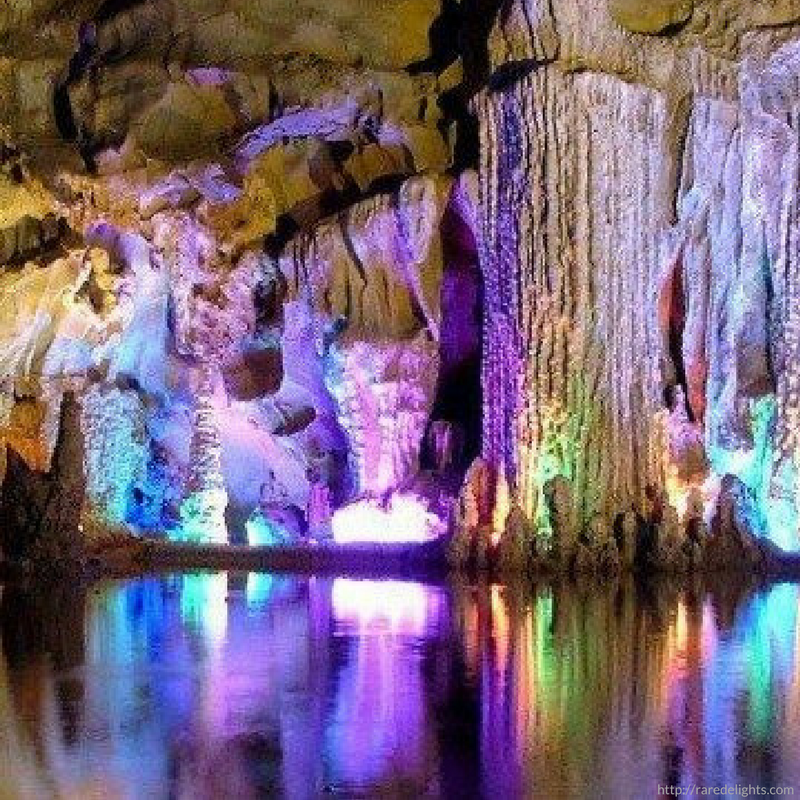
Read Part 2 and see the Top 5 Coolest Looking Caves You’ve Ever Seen
